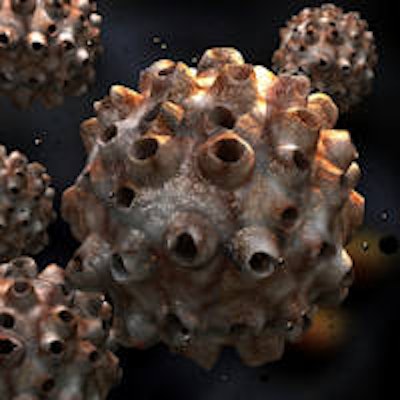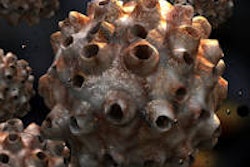
In an important and wide-ranging study of more than 270 head and neck cancer tumors, researchers have identified genomic changes in head and neck cancers (HNCs) caused by human papillomavirus (HPV).
The findings could provide more detailed explanations of how HPV infection and smoking play roles in HNC risk and disease development, while offering potential diagnostic and treatment therapies, the researchers with The Cancer Genome Atlas (TCGA) wrote in a new study published online in the journal Nature (January 28, 2015, Vol. 517, pp. 576-582).
 D. Neil Hayes, MD, MPH. Image courtesy of University of North Carolina School of Medicine.
D. Neil Hayes, MD, MPH. Image courtesy of University of North Carolina School of Medicine."The rapid increase in HPV-related head and neck cancers, noticeably in oropharyngeal tumors, has created an even greater sense of urgency in the field," senior study author D. Neil Hayes, MD, MPH, said in a statement. Dr. Hayes is an associate professor of medicine at the University of North Carolina (UNC) and the UNC Lineberger Comprehensive Cancer Center at Chapel Hill. "We're uncovering differences between tumors with and without HPV infection, and these new data are allowing us to rethink how we approach head and neck cancers," he noted.
"While many head and neck cancers are preventable, they are increasingly common throughout the world and often challenging to effectively treat over the long term," National Cancer Institute Director Harold Varmus, MD, said in the statement. "This type of broad analysis provides important new clues for future research and treatment directions."
In this study, U.S. researchers performed genomic analyses on 279 tumors -- squamous cell carcinomas or HNSCCs -- from untreated patients. Approximately 80% of tumor samples were from patients who smoked, and the majority of samples were oral cavity cancers (61%) and larynx cancers (26%).
They identified subtypes of HNC based on their genomic characteristics, changes in smoking-related tumors, and genomic differences in HNC tumors linked to HPV, which is the most commonly sexually transmitted disease in the U.S.
Genes affecting about 40% of these cancers form key parts of a pathway that helps determine cell survival and drug resistance, the investigators found. They found that extra copies of the genes FADD and BIRC2, or mutations in or the absence of the CASP8 gene in smoking-related cancers, may be part of the resistance of cancer cells to treatments. Similarly, the absence of the TRAF3 gene, or extra copies of a gene for the growth-promoting E2F1 protein in HPV-related cancers, also may increase resistance.
Results
Head and neck cancers are the world's sixth most common type of cancer, with more than half a million people worldwide diagnosed annually; more than half of these patients die each year. An estimated 55,000 people developed HNC in the U.S. in 2014, and about 12,000 die from the disease each year (CA: A Cancer Journal for Clinicians, January 7, 2014, Vol. 64:5, pp. 9-29).
“The rapid increase in HPV-related head and neck cancers, noticeably in oropharyngeal tumors, has created an even greater sense of urgency in the field.”
The researchers confirmed that many patients with HPV-associated tumors (about 25% of HNCs have a link to HPV infection) have specific alterations of the gene FGFR3 and mutations in the PIK3CA gene, also found in a much broader set of mutations in smoking-related tumors. Interestingly, the epidermal growth factor receptor (EGFR) gene is frequently altered in HPV-negative tumors in smokers, but it is rarely abnormal in HPV-positive tumors.
More than 70% of HNCs had alterations in genes for growth factor receptors (EGFR, FGFR, IGFR, MET, ERBB2, DDR2), signaling molecules (PIK3CA, HRAS) and cell division regulation (CCND1), the researchers found. These genes may play roles in the pathways that control cell growth and proliferation, as well as which therapies are either available or in development, the study authors noted.
The findings showed similarities between HNC genomes and other cancers, including squamous cell lung and cervical, indicating possible common paths of cancer development and potential treatment opportunities.
"It is surprising to see that head and neck tumor genomes are remarkably similar to cervical and squamous lung cancer genomes," Dr. Hayes said. "They are from very different organs, but they show similar losses and gains of genetic material across tumors."
"These novel findings help establish a genomic map of various head and neck cancers, provide new insights into other similar cancers and may further our understanding of how viruses can impact disease," National Human Genome Research Institute Director Eric D. Green, MD, PhD, said.
The study, "Comprehensive genomic characterization of head and neck squamous cell carcinomas," is the most comprehensive examination to date of genomic alterations in HNCs, according to the National Institutes of Health, which funded the research.



















